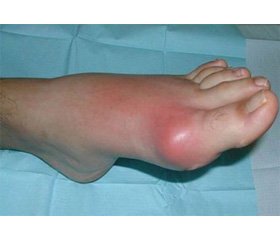Журнал «Боль. Суставы. Позвоночник» 2 (18) 2015
Вернуться к номеру
Clinical and Prognostic Significance of Serum Uric Acid as a Marker Complicated Course of Gout on the Background Pathology of Digestive Tract
Авторы: Andrusha A. - Kharkiv National Medical University, Kharkiv, Ukraine
Рубрики: Ревматология, Травматология и ортопедия
Разделы: Медицинские форумы
Версия для печати
Статья опубликована на с. 82
Introduction. According to statistics, gout — the most common cause of arthritis in men older than 30 years. At present, the disease is considered not only as clinicians recurrent monoarthritis, but as a systemic disease with severe visceral manifestations. It is therefore timely diagnosis of gout and its visceral manifestations, early and appropriate treatment of the main nosology and related pathologies has clinical and social importance for these patients.
The aim of our study was to investigate the features of primary gout against pathology of the gastrointestinal tract (GIT), depending on the level of serum uric acid (SUA).
Materials and methods. 25 patients with gout complicated by GIT pathology were examined. The investigation of patients included general clinical and laboratory methods (including assessment of articular syndrome, SUA level by uricase method), radiographic (joint X–ray). According to history, we detailed the duration of gout (first of all specific joint syndrome), frequency (last 12 months) and duration of exacerbations, the number of affected joints and tophi in the course of the disease and at the time of inspection. The intensity of pain joint syndrome evaluated on a ten visual analogue scale (VAS). Gastrointestinal pathology was diagnosed according to the criteria relevant diagnostic nosology.
Results. Patients had different clinical gout variants: asymptomatic hyperuricemia, intermittent gout, chronic gout. Tophi were found in 6 patients. SUA level varied in the range from 360 to 731 mmol/l. To investigate the influence of SUA on the course of gout and gastrointestinal pathology, patients were divided into 2 subgroups according to the degree of hyperuricemia: the first subgroup (12 patients) with hyperuricemia greater than 600 mmol/l, the second subgroup (13 people) with moderate hyperuricemia 360–600 mmol/l. The severity of the disease was caused by a large number of affected joints (minimum 3, maximum 10) and the number of inflamed joints at inspection (2 to 6), high frequency of exacerbations joint syndrome during the year (min — 2, max — 8 times a year), duration last exacerbation (4–10 days). Loca–lization arthritis was the following: the first metatarsus–phalangeal joints, ankle, knee and elbow joints, small joints of hands. The painful articular syndrome patients assessed with VAS scale from 5 to 10 points.
Radiographic changes in affected joints were presented as following: the moderate local osteoporosis, vacuole–like bone defects with a rim of sclerosis; small erosion on the articular surfaces; consolidations and thickening of soft tissue, calcifications in soft tissues, signs of secondary osteoarthritis. These features correspond to the simultaneous exi–stence of phenomena of degradation, degeneration and regeneration. The phenomena of osteoporosis were disco–vered in patients with chronic gout, while as erosive –changes detected at high hyperuricemia and tophi gout.
Pathology of the digestive tract was presented by gastroesophageal reflux disease with esophagitis (24.0 %) and without esophagitis (32.0 %), gastritis and/or duodenitis (16.0 %) and chronic colitis (28.0 %). Erosive changes in the mucosa of the gastrointestinal tract were observed at high hyperuricemia and tophi gout (24.0 %).
Conclusion. At gout complicated by gastrointestinal di–sorders, there is a severe course of articular syndrome caused by a large number of affected joints and a high index of severity of gout. X–ray picture of the affected joints and endoscopic findings in the gastrointestinal tract characterized by changes, the severity of which depends on the degree of hyperuricemia. At high values of uric acid (> 600 mmol/l) there are erosive changes and phenomena of inflammatory erosive changes in the gastrointestinal tract mucosa.

